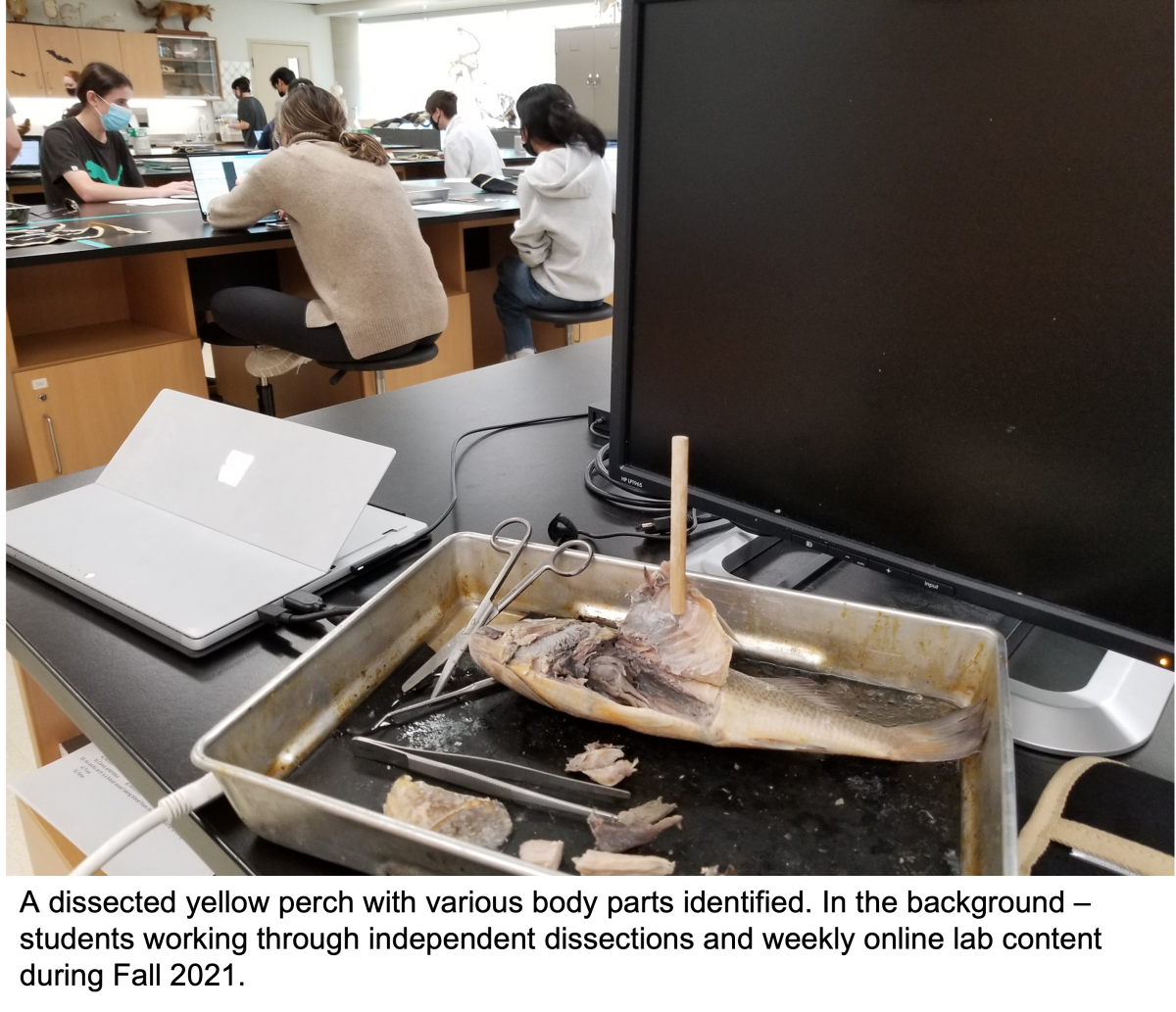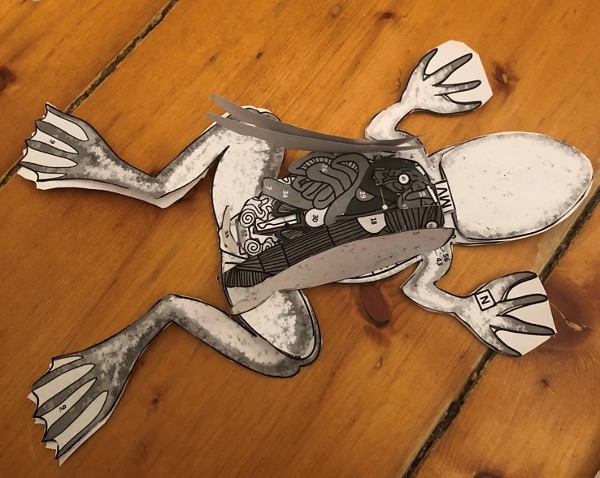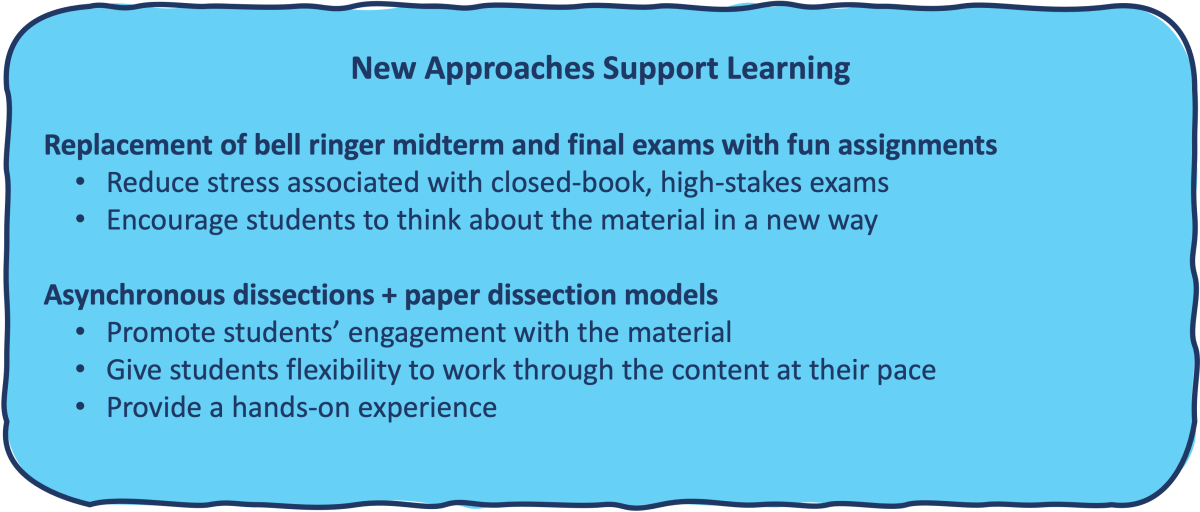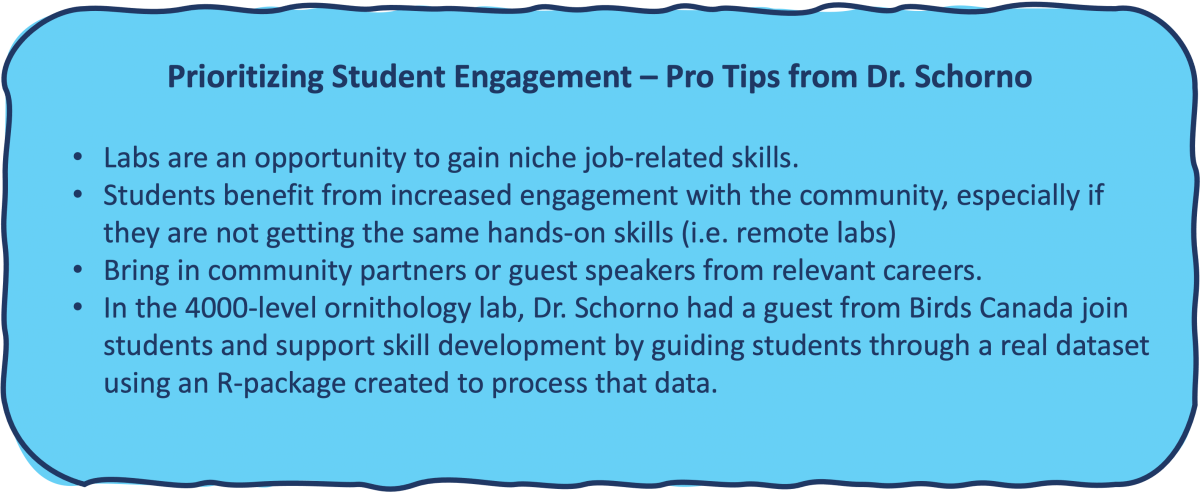Contents
Taking Inspiration from Lab Instructors – Part 1
Words By: Jessi Nelson
In this article: Labs in the College of Biological Science (and beyond) have gone through an incredible transformation in response to the changes in remote and in-person learning!
Find out more about: The incredible creativity, innovation, and time lab instructor, Dr. Sarah Schorno, put in to revamp a second year large Zoology course with student-learning as the central motivator behind the changes.
Lab Instructors in the College of Biological Science Are Next Level Awesome!
What Makes Labs Special?
If you think back to your most memorable learning experiences in university, who inspired you, who challenged you, and who took the stuff you learned in lecture halls and put it into practice? Are labs and lab instructors top of mind? They sure are for me! Whether it was the hands-on learning, the fun and engaging experience of being in the field, sitting at a lab bench with a microscope, a dissection kit, a tissue sample… one thing is undeniably true of labs—they are a very exciting and engaging part of learning for many students in the College of Biological Sciences at the University of Guelph!
It is also the lab instructors, who when the pandemic hit, were faced with unanticipated challenges! Of course, all educators were faced with challenges from elementary to higher education, and each had unique obstacles to overcome. Innovations have been made on every front, and it goes without saying, lab instructors have done some pretty darn impressive stuff!!!
The next two Spotlights (December and January) will showcase some of the PHENOMENOL things lab instructors have done in their lab courses to make the impossible possible, and how that has influenced the way they teach moving forward.
December’s Spotlight shines a light on a second year Zoology course, ZOO*2090 (Vertebrate Structure and Function), where 260 students come together to learn about vertebrate animals. The lab portion of the course is run by Dr. Sarah Schorno, who completed her PhD at Guelph.
Pivoting Methods From In-Person to Online
Prior to the COVID-19 pandemic, ZOO*2090 blended weekly lectures with a 3-hour in-person lab. Labs included various dissections of vertebrate species including: a frog, a fish, a dogfish shark, a pigeon, and a rat, with a focus on the identification and comparison of body systems across species.

In order to transition online for the Fall 2020 semester, Dr. Schorno created fun, engaging and accessible content, available both synchronously and asynchronously! In the summer months of 2020 Dr. Schorno created videos and pictures of the dissections. Students were then able to choose whether they wanted to work through the labs asynchronously or synchronously each week as they worked through the virtual dissection content. During the online synchronous labs in Fall 2020, students could attend a live interactive pre-lab talk with the lab instructor and teaching assistants (TAs), then had time to work in breakout rooms with other students to complete weekly lab manual activities using the online content. As students transitioned back to some in-person learning during Fall 2021, labs in ZOO*2090 were held in-person every other week, with the other half of the labs throughout the semester still held in the synchronous online format similar to Fall 2020.

To support the video dissections in Fall 2021, students were given a lab package, that included paper dissection models from Getting Nerdy® where they put together a Frog, a Dogfish Shark and a Bird model over the course of the semester. This hands-on activity, supported by a COESP “Try New Things” (TNT) Grant, got students away from the screen and provided them with a great at-home study tool that would not have typically been included in the lab learning materials.
Innovation with Assessment Methods
Adjusting assessment methods for a remote setting provided the opportunity to create assessments that moved away from bell-ringer style exams. In many lab courses, midterms and finals follow a bell-ringer style where students move from station to station and answer questions. Instead of these high-stakes (and often high-stress) methods of assessment, students were given three forms of lab assessment:
- 7 weekly lab quizzes (best 5 of 7) worth 15% (each quiz worth 3%)
- Midterm assignment worth 15% – anatomy showcase
- Students were each assigned a random fish or amphibian species and had to highlight some unique anatomy for that species
- Students had the option to present their assignment as either a pamphlet, video or newsletter
- Final assignment worth 20% – create a Frankenstein-creature
- Students were randomly assigned one of ten environments
- They had to create a Franken-creature using 3 body structures and systems with the objective that it would thrive in their given environment
- Students had the option to present their assignment as either a poster, video or webpage
For the midterm and final assignment, students were given two weeks and could use any of their lecture or lab notes as well as credible outside sources to support their projects.

Challenges Overcome
Question: What barriers/challenges did you face and how did you overcome them?
Dr. Schorno: There were two big challenges we faced. With both high costs and health/safety concerns, students could not be sent vertebrate specimens to dissect at home. Instead, filmed dissections with pictures were done during the summer months prior to the Fall 2020 offering of the course. The second challenge was the increase in the workload it took to get the same course running. Rather than setting specimens out on lab benches, there was written content, labelled pictures, and videos, all of which had to be posted at least two weeks in advance for students. It was crucialto set aside time in my schedule to create the content, which often took double the time I anticipated.
Q: Do you see these methods pivoting between in-person and remote?
Dr. Schorno: Now that the content has been created, it can be reused with minimal modifications which could transfer to future offerings of the course.
Preparing Students for Remote Labs
To prepare students for the labs and their assessments, it was important to provide them with a variety of supports since they would not be getting the in-person, hands-on experiences.
- Mid-semester survey – How are things going? What more do you need from us?
- Mentally prepare students for the assessments with rubrics, synchronous Q and A periods and work sessions that were structured into their schedule (during lab sessions).
Student Feedback
The overall feedback from students was positive, in that they appreciated thinking about the course content in a different way, especially with respect to the new lab assignments. Students reported the workload for the course was appropriate on course evaluations and an overall enjoyment of the course. Teaching assistants marking the midterm and final lab assignments also commented they enjoyed grading these new lab assignments. Given the positive response from students, Dr. Schorno said the plan is to carry the lab assignments forward into future offerings of the course, removing the stressful bell ringer exams.

Additional Resources
- Getting Nerdy with Mel and Gerdy. https://gettingnerdywithmelandgerdy.com/
- Association for Biology Laboratory Education – ABLE Web. They are a North American Group of dedicated and passionate biology lab educators. ABLE web has articles and forums! https://www.ableweb.org/
- Open Consortium of Biology Educators – oCUBE – https://www.ocube.ca/. It is an opportunity to work with and get mentoring from other like-minded instructors who want to try different methods of assessment. They also have virtual events.
- Connecting with long-time lab instructors in Integrative Biology who are doing some pretty EPIC things!



